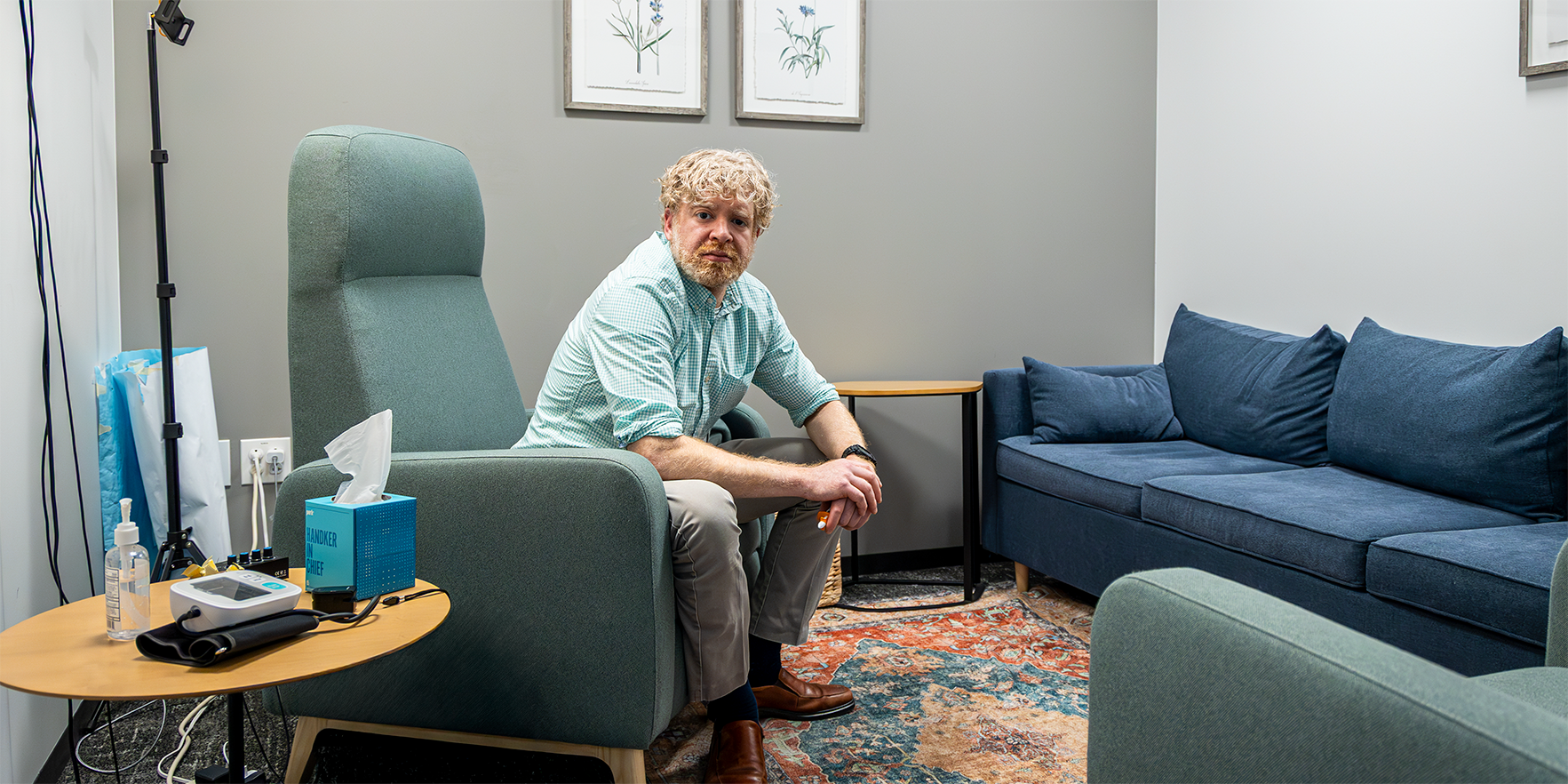A treatment offered by the University of Colorado School of Medicine Community Practice is giving hope to people with depression who haven’t found relief with other treatment options.
Therapy and medication remain front-line treatments. However, current medications work for only six in 10 people, according to a Transforming Healthcare presentation by the School of Medicine Department of Psychiatry.
While the term “treatment-resistant depression” is loosely defined, it’s life-altering for those who suffer from its symptoms.
“Our typical patient has had more than 10 medication trials and experienced several decades of living with treatment-resistant depression, whether episodic or more persistent,” said Elizabeth Fenstermacher, MD, assistant professor of psychiatry and chair of the Transcranial Magnetic Stimulation Clinic.
How the therapy works
Transcranial magnetic stimulation, or TMS, is Food and Drug Administration-approved for treatment-resistant depression with several indications for psychiatric disorders.
“TMS can be described like this: Transcranial means across the cranium or skull. Using a neuromodulatory technique, we activate the cortical, or brain tissue, by fluctuating the magnetic field,” she said.
TMS is an outpatient procedure that uses MRI-strength magnetic pulses to stimulate a specific region of the brain – the left dorsolateral prefrontal cortex. Patients sit adjacent to a magnetic coil that produces a magnetic field, and targeted regions of the brain receive electrical currents that enhance function and regulate mood.
For patients with treatment-resistant depression, the procedure offers hope beyond yet another medication trial.
A second-line option
“We know in this population that if we gave them another medication, we have about a 7% chance of improvement,” Fenstermacher said. “While the numbers vary somewhat based on the screener being used, on average, up to 60% of patients who have treatment-resistant depression have meaningful improvement with TMS, with upwards of 30% experiencing remission.”
These rates are meaningful to her and the people who have lived for decades with depression.
“Every day I have patients in my office telling me that they didn't think it was possible,” she said. “They’re able to again interact and function and have real relief from these depressive symptoms.”
This is especially notable for Fenstermacher, who said many of her patients who experience decades of depression are so impaired that they aren’t able to participate in normal activities of daily life.
The downsides of TMS
“The major downside is that some people don’t respond, and when that happens, it’s pretty discouraging,” Fenstermacher said, explaining how TMS therapy is a large investment for patients.
Insurance authorization is a major first hurdle. Though most major carriers cover TMS, patients must be able to prove that therapy and multiple medication trials have been ineffective.
For those who receive insurance approval, the procedure is still expensive. Most patients will be required to pay out of pocket for some portion of their treatment. TMS is not currently covered by Medicaid in Colorado.”
“Every day I have patients in my office telling me that they didn't think it was possible. They’re able to again interact and function and have real relief from these depressive symptoms.” – Elizabeth Fenstermacher, MD
Patients also invest a lot of time into TMS, with one round of treatment requiring clinic visits five days a week for six weeks.
The treatment’s side effects are typically minimal. The most common are local pain and discomfort, with reports of jaw clenching and eye blinking. About 30% of patients experience headaches. In rare cases, (six out of 10,000 patients) seizures can occur. There are certain risk factors that increase a patient’s risk of seizure, such as a brain tumor or history of seizure, and in those cases, TMS would not be recommended.
While TMS is approved for the treatment of major depression, it’s not recommended for bipolar disorder, as there is evidence it can cause hypomania or mania.
An answer to the mental health crisis?
TMS may be a good option for people with documented treatment-resistant depression, but availability and high costs are a barrier.
“The major reason we don't see more TMS treatment options available is because the devices are expensive, so most are located in larger clinic settings making it harder for rural populations to access,” Fenstermacher said. “The treatment is expensive, with many patients needing to pay thousands out of pocket. And some patients face the added barrier of being able to demonstrate the severity of their symptoms over long periods of time in order to receive insurance approval.”
Despite obstacles, Fenstermacher is hopeful.
“Our clinic is continuing to expand our staffing so we can see more patients,” she said. “And we’re working to improve our predictions for which patients will respond best to TMS so we can best use the limited resource that we have.”
Guest contributor: Carie Behounek is a freelance writer specializing in science and health.




